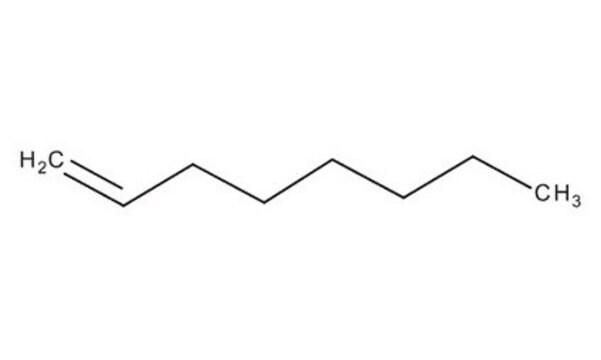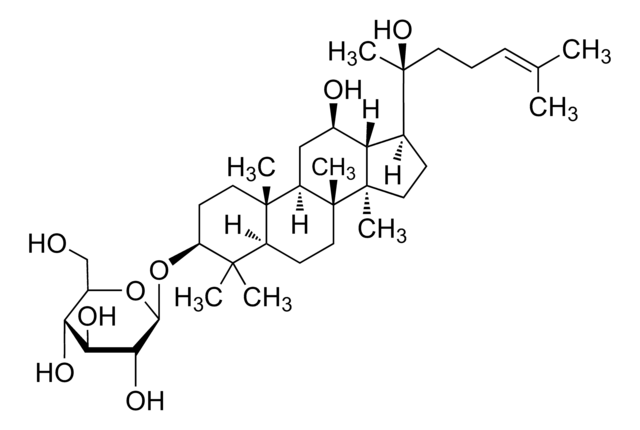Kluczowe dokumenty
About This Item
Polecane produkty
klasa czystości
analytical standard
Poziom jakości
gęstość pary
3.9 (vs air)
ciśnienie pary
36 mmHg ( 38 °C)
Próba
≥99.5% (GC)
temp. samozapłonu
446 °F
okres trwałości
limited shelf life, expiry date on the label
granice wybuchowości
3.9 %
metody
HPLC: suitable
gas chromatography (GC): suitable
współczynnik refrakcji
n20/D 1.408 (lit.)
n20/D 1.408
n20/D 1.409 (lit.)
bp
122-123 °C (lit.)
mp
−101 °C (lit.)
gęstość
0.715 g/mL at 25 °C (lit.)
Zastosowanie
cleaning products
cosmetics
environmental
flavors and fragrances
food and beverages
personal care
petroleum
Format
neat
ciąg SMILES
CCCCCCC=C
InChI
1S/C8H16/c1-3-5-7-8-6-4-2/h3H,1,4-8H2,2H3
Klucz InChI
KWKAKUADMBZCLK-UHFFFAOYSA-N
Szukasz podobnych produktów? Odwiedź Przewodnik dotyczący porównywania produktów
Opis ogólny
Zastosowanie
Hasło ostrzegawcze
Danger
Zwroty wskazujące rodzaj zagrożenia
Zwroty wskazujące środki ostrożności
Klasyfikacja zagrożeń
Aquatic Acute 1 - Aquatic Chronic 1 - Asp. Tox. 1 - Flam. Liq. 2
Zagrożenia dodatkowe
Kod klasy składowania
3 - Flammable liquids
Klasa zagrożenia wodnego (WGK)
WGK 3
Temperatura zapłonu (°F)
50.0 °F - closed cup
Temperatura zapłonu (°C)
10 °C - closed cup
Środki ochrony indywidualnej
Eyeshields, Faceshields, Gloves, type ABEK (EN14387) respirator filter
Wybierz jedną z najnowszych wersji:
Certyfikaty analizy (CoA)
Nie widzisz odpowiedniej wersji?
Jeśli potrzebujesz konkretnej wersji, możesz wyszukać konkretny certyfikat według numeru partii lub serii.
Masz już ten produkt?
Dokumenty związane z niedawno zakupionymi produktami zostały zamieszczone w Bibliotece dokumentów.
Klienci oglądali również te produkty
Nasz zespół naukowców ma doświadczenie we wszystkich obszarach badań, w tym w naukach przyrodniczych, materiałoznawstwie, syntezie chemicznej, chromatografii, analityce i wielu innych dziedzinach.
Skontaktuj się z zespołem ds. pomocy technicznej













